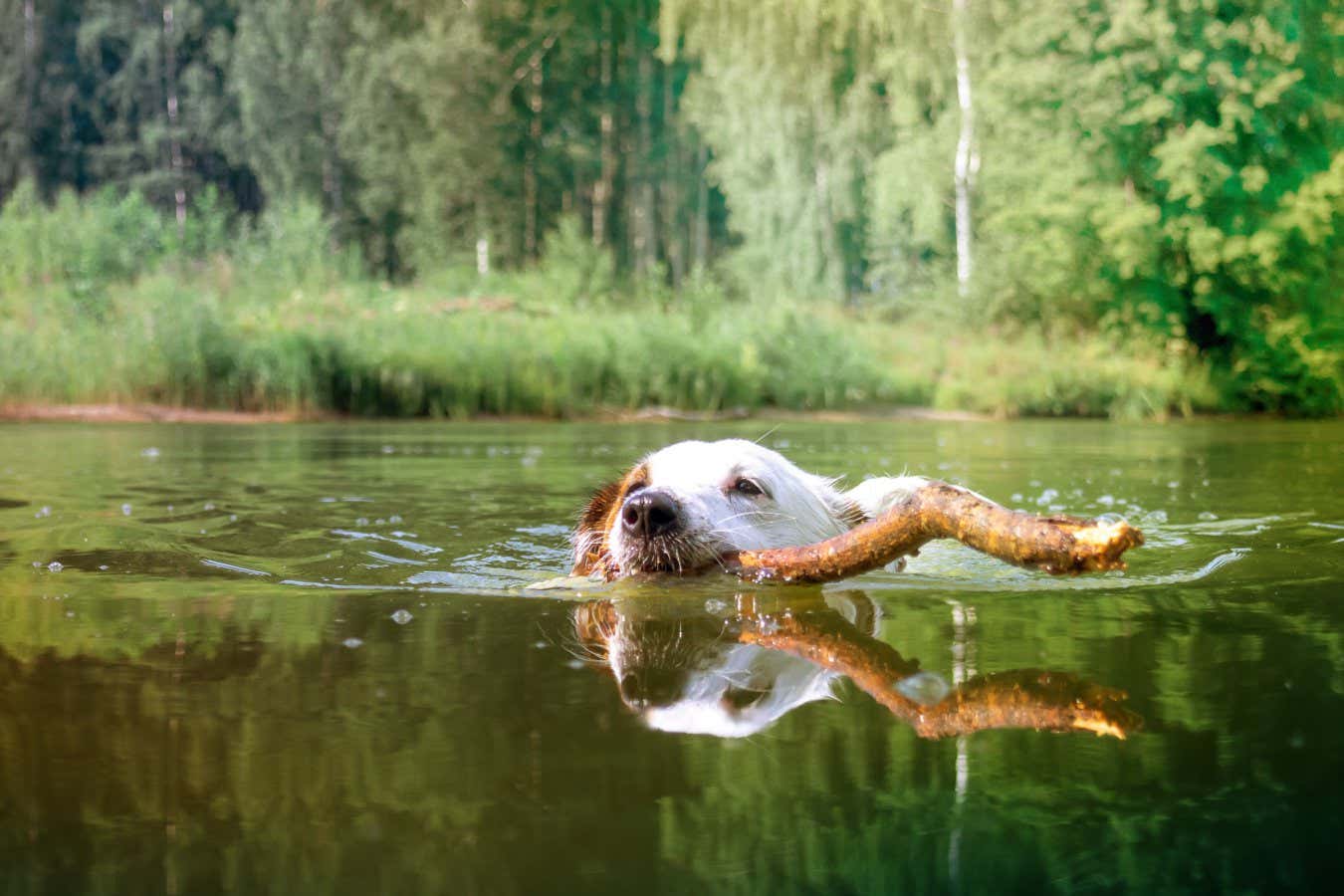
Dogs treated for fleas release insect-killing chemicals into water when they swim
Natalya_Maisheva/Shutterstock
If your dog will jump in the nearest river, pond or lake given half a chance, don’t use spot-on treatments for fleas and ticks, say researchers.
A study has shown that when dogs are immersed in water, their skin and fur can release levels of the active ingredients harmful to aquatic wildlife and the animals that eat them – including birds – for up to 28 days after treatment.
“If your dog swims regularly, you shouldn’t be treating it with spot-on,” says Rosemary Perkins at the University of Sussex, UK.
When spot-on treatments were first introduced, they were wrongly assumed not to have any consequences for the wider environment. Only in 2011 did a European Medicines Agency paper suggest animals be kept out of water for 48 hours afterwards, and this suggestion was not based on any experiments, says Perkins. “I could find absolutely no supporting evidence for that. It’s just a thumb-suck figure.”
She started to suspect there was an issue after finding fipronil, one of the pesticides used in spot-on treatments, in rivers in the UK. “We found astonishingly high levels,” says Perkins.
So her team applied spot-on treatments containing either fipronil or a neonicotinoid called imidacloprid to 25 and 24 dogs, respectively. After five, 14 or 28 days, the dogs were immersed in water up to their shoulders in plastic tubs for 5 minutes, and the levels of the pesticides in the water were then measured.
The team found that even after 28 days, the amount of pesticide coming off a single large dog in this time frame would be enough to exceed safe levels if mixed into a 100-cubic-metre body of water. That’s the volume of a pond a few metres across, but even much larger bodies of water will exceed the safe limit if lots of treated dogs swim in them often, says Perkins.
She argues that regulators around the world should change guidelines but suspects this could take a long time, if it happens at all. But dog owners can act now – they should use spot-on treatments only when necessary, rather as a preventative, says Perkins, as well as keep dogs away from water for at least a month after treatment. “The take-home finding is that there is an element of risk if your dog goes swimming at any point within that period.”
There is now an alternative to spot-on treatments in the form of oral tablets, but Perkins says it isn’t clear if these are better. The active ingredients are long-lasting chemicals that are excreted in faeces and can pollute soils, she says. “We just have no idea what their impact is.”
Topics:
Source link : https://www.newscientist.com/article/2482650-dogs-pollute-water-with-pesticides-even-weeks-after-flea-treatment/?utm_campaign=RSS%7CNSNS&utm_source=NSNS&utm_medium=RSS&utm_content=home
Author :
Publish date : 2025-06-02 11:04:00
Copyright for syndicated content belongs to the linked Source.